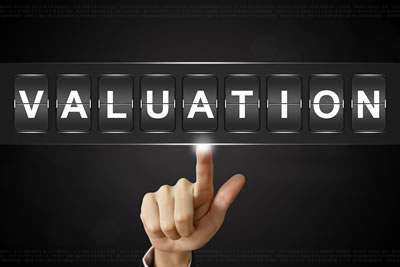Determining Normal Useful Life
 A skilled and experienced machinery or equipment appraiser is a great person to have on your list of contractors that help your business. Whether you are buying, selling, leasing equipment or need to have an accurate valuation of your business, a professional equipment appraiser can help you determine the most accurate value of assets that you own or are hoping to buy. There are lots of different factors that go into an equipment appraisal, some of these can be confusing and if you aren’t a professional appraiser, it may be hard to understand why these values are important. One of factors that we are often asked about is “Normal Useful Life,” and this combined with “Remaining Useful Life” can seem redundant in equipment appraisals. To make things easier to understand, here is what you need to know about normal useful life and how it is determined.
A skilled and experienced machinery or equipment appraiser is a great person to have on your list of contractors that help your business. Whether you are buying, selling, leasing equipment or need to have an accurate valuation of your business, a professional equipment appraiser can help you determine the most accurate value of assets that you own or are hoping to buy. There are lots of different factors that go into an equipment appraisal, some of these can be confusing and if you aren’t a professional appraiser, it may be hard to understand why these values are important. One of factors that we are often asked about is “Normal Useful Life,” and this combined with “Remaining Useful Life” can seem redundant in equipment appraisals. To make things easier to understand, here is what you need to know about normal useful life and how it is determined.
What is Normal Useful Life?
Useful life is a concept that has its origination in accounting. Accountants have a formula that determines how long an asset can reasonably be used for a business. This value is helpful for tax purposes, but may not be as helpful for the purpose of business valuation or the sale or purchase of a piece of equipment. Appraisers have a different value to determine the normal useful life of an asset that gives all appraisers common ground when looking at your equipment.
In general, normal useful life is the number of years that a piece of equipment can be expected to be used before it is retired from use by the business. This is usually a very conservative measure of life. You may or may not chose to retire the equipment at the end of the normal useful life, but it is a good value to know, especially if you are purchasing a piece of used equipment or machinery.
How is Normal Useful Life Calculated?
An appraiser calculates the normal useful life of a piece of equipment by comparing similar items and how long those items are reasonably used in equipment. This calculation looks at the specific type of equipment and then compares it to other similar equipment and the length of time it is typically used by a similar business. Based on this information, the appraiser can determine the reasonable life of a piece of equipment.
For example: You may need to determine the reasonable life of a computer in your office. Your equipment appraiser will take the specifications of the computer and compare it to other similar items and how long other businesses use the same item. If the standard length of use for this computer is 3 years, the Normal Useful Life is determined to be 3 years. You may not need to upgrade this equipment after this time, or you may choose to upgrade sooner. The Normal Useful Life simply shows how long other businesses use the same item.
How is the Normal Useful Life Used?
This value is most helpful for businesses that need to determine the asking price for a piece of equipment that they are selling or wanting to auction. This value helps in determining a fair market price for the equipment. It is also a good tool for business owners that are considering a lease for a piece of equipment. Normal Useful Life may determine that the useable life for a piece of equipment is shorter than a reasonable lease term, and it can also show that a newer piece of equipment is a better financial option.
For More Information on
Normal Useful Life is a great tool for business owners who are looking to better understand the value of their equipment and how easily it will sell at a fair market price. If you are looking to sell or buy used equipment for your business, let R Stout Appraisers provide you with a certified equipment appraisal. We can help you determine if you are making a good choice or want to keep looking, or if you are selling your equipment for fair market value. To schedule an appraisal call us today at (248) 978-8338.